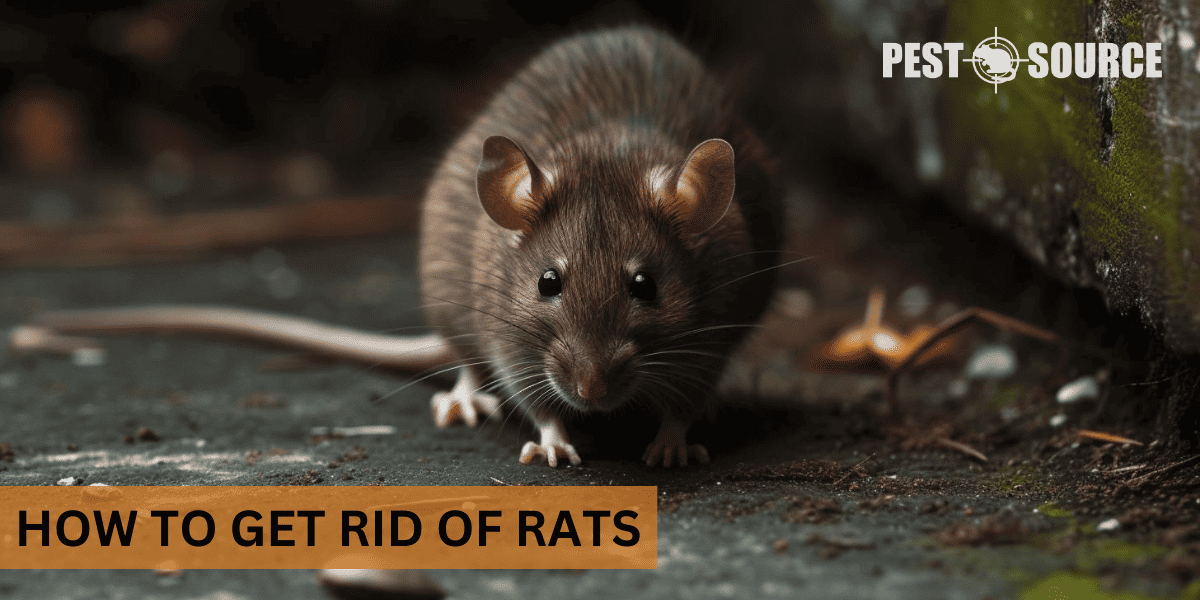Getting rid of rats typically requires a comprehensive approach including cleanliness, sealing entry points, and strategically using traps or baits. This post will provide a detailed guide on identifying rat presence, removing attractants, and effectively using traps or rodenticides. Implementing a thorough rat control strategy is essential for eliminating current infestations and preventing future ones in both domestic and commercial settings.
Immediate Steps to Eliminate Rats Quickly
If you’ve discovered rats in your house, acting swiftly is crucial. To get rid of rats fast, start by setting up snap traps or electronic traps in areas where you’ve noticed rat activity. Bait the traps with peanut butter or bacon, as these are highly attractive to rats. Check the traps frequently, and dispose of any captured rats following local guidelines for wildlife.
Sealing Entry Points and Using Traps
Rats can squeeze through tiny openings, so inspect your home thoroughly for any cracks or holes. Seal these entry points with steel wool, caulk, or metal sheeting to prevent more rats from entering. Alongside sealing, strategically place various traps, such as bait stations or glue traps, around your home. Remember, safety is paramount, so always follow the manufacturer’s instructions when setting up traps.
Professional Pest Control
Sometimes, the infestation may be too severe for DIY methods. In such cases, hiring a professional pest control service is the best course of action. They can provide a comprehensive plan to eradicate the rats and prevent future infestations through more advanced methods like fumigation or employing rodenticides safely.
Best Ways to Get Rid of Rats in Backyard and Outside Areas
To tackle rats outdoors, start by removing potential food sources like pet food, bird seeds, and fallen fruits. Use outdoor bait stations that are designed to withstand the elements and place them around the perimeter of your property. These stations should be tamper-resistant to protect other wildlife and pets.
Deterring Rats from Your Yard
Creating an inhospitable environment for rats is key. Keep your yard tidy by removing debris, trimming vegetation, and sealing compost bins. Install motion-activated sprinklers or ultrasonic devices to deter rats from entering your yard. These methods can be effective in making your outdoor space less attractive to rodents.
Getting Rid of Large Rats and Rat Nests Outside
For larger rats or established nests, you may need to use more robust traps or seek professional help. Large snap traps or live catch traps can be effective. Always wear gloves and dispose of any dead rats or nests in sealed plastic bags.
How to Get Rid of a Rat Infestation
The signs of a rat infestation include droppings, gnaw marks, and greasy rub marks along walls. If you notice these signs, it’s time to act.
To remove a rat infestation, combine trapping with habitat modification. Reduce clutter and store food in rodent-proof containers. For a severe infestation, professional exterminators can provide a more aggressive approach, using rodenticides safely and effectively.
How Do You Get Rid of Rats in the Walls?
Rats in the walls can be tricky to remove because they are in a hidden, enclosed space. Listen for scratching or scurrying noises to identify their location.
To get rid of rats in walls, place traps at the base of your walls or in any accessible attic spaces. Use a stethoscope or a glass pressed against the wall to locate their movement. Once you’ve identified their routes, set up traps or use a rodenticide injected into the wall by a professional.
If you find rats elsewhere in your house, follow similar steps as mentioned earlier: seal entry points, set traps, and maintain cleanliness. A tidy home with no food crumbs or accessible water sources is less enticing for rats.
How to Keep Rats Away from Your House
Prevention is the best defense against rats. Maintain a clean home, store food properly, and dispose of garbage regularly. Regularly inspect your home for potential entry points and seal them promptly.
To repel rats, consider using natural deterrents like peppermint oil or commercially available repellents. Long-term strategies include adopting a cat, keeping your garden clean, and installing barriers like metal kick plates at the base of doors.
Good sanitation practices are critical. Keep your kitchen clean, manage compost wisely, and use garbage cans with tight-fitting lids. Exclusion tactics such as door sweeps and repairing broken vents can also keep rats at bay.
How to Get Rid of Rats Without Poison or Traps: Humane, Natural, or Alternative Methods
If you prefer to avoid poisons and traps, there are alternative methods for rat control. Live catch traps allow you to capture rats without harming them, enabling you to release them far from your home. Natural deterrents, such as peppermint oil, cayenne pepper, or clove oil, can also repel rats due to their strong scents.
For households with pets, safety is paramount. Non-toxic methods include ultrasonic repellents that emit a frequency unpleasant to rats but inaudible to humans and pets. Another option is to introduce natural predators into your garden, such as owls, by installing an owl box to encourage their presence.
How to Prevent Rats From Coming Back
Sustainable rat control means creating an environment that is consistently unattractive to rats. This involves ongoing sanitation, regular inspections of your home for potential entry points, and maintaining a tidy yard.
Permanent solutions include installing metal barriers to prevent gnawing and entry, using rodent-proof storage containers for food, and keeping your home and yard clutter-free. Maintain these practices as part of your regular routine to deter rats over the long term.
To get rid of rats for good, combine immediate removal methods with long-term prevention strategies. Engage with your community to tackle the issue on a larger scale, ensuring that your neighborhood doesn’t provide a conducive environment for rat populations to thrive.



